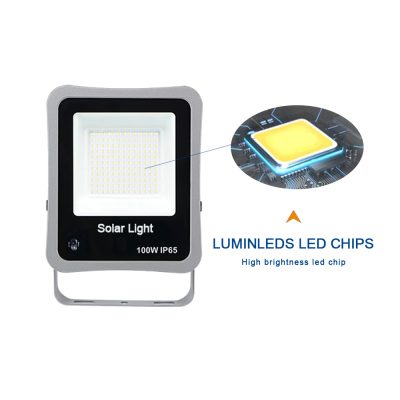In recent years, the global environment has been continuously deteriorating, so the country is increasingly advocating energy conservation and environmental protection, and solar street lights happen to symbolize the characteristics of energy conservation and environmental protection. However, some people do not know the configuration of solar street lights very well, so when buying solar street lights, it is easy to buy inferior products. So, how to determine the brightness of solar street lights?
In the market, due to the lack of understanding of the solar street lamp industry technology, users can only have a general understanding of some simple mainstream configurations on the market, such as how many watts should be matched with solar panels, how much capacity is needed for batteries, and how many lights are needed. Therefore, the brightness of the lamp can only be judged by these unrealistic parameters. This is actually a misunderstanding, these parameters are only superficial, we need to understand the real needs of users. What is the purpose of users buying light bulbs? What is the original performance of the lamp? After all, its destination is “lighting”. The user buys a lamp for lighting, and the original performance of the lamp is also for lighting. Based on this, the source code thought deeply and got the answer. The user does not purchase the parameters, configuration, power, the user buys the lamp, only the total amount of light and the light quality actually emitted by the solar street lamp. This is our initial requirement for solar street lights. After understanding this attraction, we need to understand some industry-related knowledge.
Solar street light
[Industry knowledge] How to judge the solar street light source?
1. Average life span: The light source is approximately the average life span, that is to say, a batch of light sources are on at the same time. When 50% of the light sources fail, the average lifetime of the batch is the same.
2. Strobe: the number of times the light source flashes per second. Failure to provide a stable voltage will result in large stroboscopic flashes. Stroboscopic flash sources have the greatest eye damage, and fluorescent light sources flash more frequently.
3. Luminous flux: For lamps, the simplest explanation is how much light it emits in lumens (LM).
4. Lighting effect: The luminous efficiency of a lamp is the amount of light that can be emitted per unit power, and the unit is LM/W.
5. Indicates the degree to which the light source restores the color of the object. Generally, sunlight has the best and most realistic response to the color of objects, so their color rendering is defined as 100, and color rendering index ≥ 70 is a good source.
6. Color temperature, the color temperature of the light source is different, and the light color is also different. The color temperature is low, the light is yellowish, we call it warm color, the yellow light is good, the light color is high, the high color temperature white light is used for road lighting, has a medium visual effect, good visibility, and low color temperature is yellow light.
























